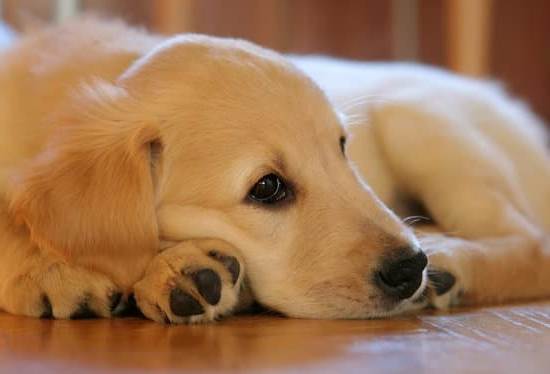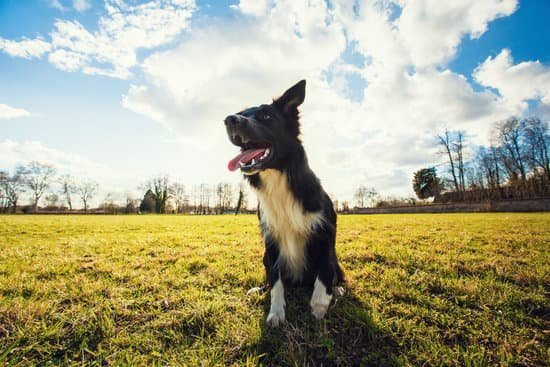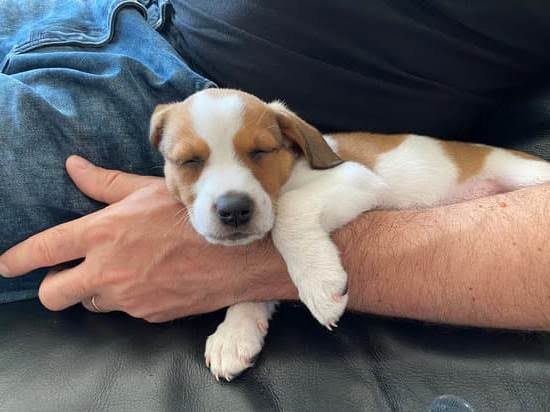House training young dogs is a crucial aspect of their early development and overall well-being. It lays the foundation for good behavior and creates a harmonious living environment for both pets and owners. In this article, we will delve into the essential strategies and techniques on how to house train young dogs effectively.
House training goes beyond just preventing accidents indoors; it teaches young dogs proper behavior, boundaries, and establishes a routine that sets them up for success in the long run. By understanding the importance of house training, pet owners can nurture a positive relationship with their furry companions and ensure a happy coexistence within the household.
Through this comprehensive guide, we will explore the benefits of house training for young dogs, discuss tips on setting up your home for success, highlight effective positive reinforcement techniques, address common mistakes to avoid, provide insights on dealing with accidents gracefully, emphasize the significance of patience and persistence in the process, and ultimately celebrate milestones achieved in successful house training. Mastering these fundamental principles will not only enhance your pup’s behavior but also strengthen your bond with them.
Benefits of House Training
House training young dogs is an essential aspect of responsible pet ownership. Not only does it promote a clean and hygienic living environment for both the dog and its owners, but it also helps in fostering a strong bond between the two. By understanding the benefits of house training, dog owners can appreciate the importance of investing time and effort into this process.
Preventing Accidents and Unwanted Behavior
One of the primary benefits of house training young dogs is to prevent accidents and unwanted behavior inside the home. Without proper training, puppies may relieve themselves indoors, leading to odors, stains, and potential health hazards. Additionally, house training helps in establishing boundaries and teaching young dogs where it is appropriate to go potty, avoiding destructive habits such as chewing on furniture or shoes.
Promoting Health and Safety
House training is not just about maintaining a clean household but also about ensuring the health and safety of the young dog. By teaching them to eliminate outside or in designated areas, owners can reduce the risk of parasites, bacteria, and other pathogens that may be present in their waste. This practice also minimizes the chances of accidental ingestion of harmful substances found indoors, which could lead to medical emergencies for the young dogs.
Enhancing Communication and Bonding
Another important benefit of house training young dogs is that it enhances communication between the dog and its owner while strengthening their bond. Through consistent training routines and positive reinforcement techniques, owners can effectively convey expectations to their pets and build mutual trust. This shared understanding fosters a deeper connection between human companions and canine friends, laying a solid foundation for a harmonious relationship based on respect and empathy.
Setting Up Your Home for Success
When it comes to house training young dogs, one of the crucial steps is creating a safe and comfortable environment within your home. This not only helps in avoiding accidents but also sets the stage for successful training. Here are some key tips on how to set up your home for success when house training your young pup:
- Designate a specific area in your home where your dog will spend most of its time. This could be a cozy corner with a comfortable bed and toys to keep them entertained.
- Use baby gates or create barriers to limit your dog’s access to certain parts of the house, especially areas with carpets or rugs that may be difficult to clean in case of accidents.
- Keep all household cleaning supplies, medications, and toxic plants out of reach from your curious puppy to prevent any harmful incidents.
Creating a conducive environment not only aids in house training but also ensures the safety and well-being of your young dog while they adjust to their new surroundings. Remember, a secure and welcoming space will make the training process smoother for both you and your furry friend.
- Provide adequate opportunities for outdoor potty breaks by creating a designated bathroom spot in your yard. Use phrases like “go potty” consistently during bathroom breaks to associate the words with the action.
- Invest in appropriate potty training pads or trays for indoor use, especially for younger puppies who may not be fully vaccinated yet and cannot go outside.
- Establish a feeding schedule to regulate your dog’s bathroom habits and make it easier for you to predict when they need to go. Consistency is key in reinforcing good bathroom behavior.
By setting up your home effectively for house training, you are laying down a solid foundation for success in teaching your young dog where it is acceptable to relieve themselves. Remember that patience, consistency, and positive reinforcement are essential elements in this process.
Establishing a Routine
House training young dogs can be a challenging but rewarding process that requires dedication and consistency. One of the most crucial aspects of successful house training is establishing a routine for your furry friend. By creating a schedule for feeding, bathroom breaks, playtime, and rest, you can help your young dog develop good habits and learn where and when it’s appropriate to relieve themselves.
To set up a successful routine for house training your young dog, consider the following tips:
- Establish a regular feeding schedule: Feed your dog at the same times each day to regulate their digestion and bathroom habits.
- Take them outside frequently: Puppies have small bladders and need to go out often. Take them outside first thing in the morning, after meals, after naps, before bedtime, and periodically throughout the day.
- Use consistent cues: Use the same word or phrase every time you take your dog outside to go potty. This will help them associate the cue with the behavior you want them to do.
Consistency is key when it comes to house training young dogs. Remember that accidents will happen during the learning process, so it’s important to remain patient and stick to your routine.
With time and positive reinforcement, your young dog will learn how to appropriately eliminate waste in the designated areas of your home. By establishing a solid routine for house training, you’re setting both yourself and your furry companion up for success in maintaining a clean and harmonious living environment.
Positive Reinforcement Techniques
One of the key strategies in positive reinforcement is to reward your young dog immediately after they exhibit the desired behavior. For example, if your puppy goes potty outside instead of inside the house, give them a treat or shower them with praise right after they finish. This teaches them to associate going potty outside with receiving a reward, making them more likely to continue this behavior in the future.
Consistency is crucial when using positive reinforcement techniques to house train young dogs. Make sure everyone in the household follows the same reward system and timing to avoid confusion for your furry companion. Additionally, be patient and understanding – every dog learns at their own pace, so it’s essential to stay consistent with rewards and encouragement. By staying positive and consistent in your approach, you’ll see progress in no time on how to house train young dogs.
| Benefits of Positive Reinforcement | Effective Ways of Rewarding Good Behavior |
|---|---|
| Encourages desired behavior repetition | Treats |
| Strengthens bond between owner and pet | Praise |
| Teaches association between behavior and reward | Playtime |
Common Mistakes to Avoid
House training young dogs can be a challenging yet rewarding process for pet owners. It requires patience, consistency, and understanding to ensure that your furry friend learns the appropriate behaviors when it comes to potty training.
While there are many effective techniques to house train young dogs, it is equally important to be aware of some common mistakes that could hinder the progress of this vital training. By avoiding these pitfalls, you can set your dog up for success and establish a strong foundation for a well-behaved companion.
Inconsistency in Routine
One of the biggest mistakes pet owners make when house training their young dogs is being inconsistent with their routine. Dogs thrive on predictability and structure, so it is crucial to establish set times for feeding, potty breaks, and playtime. Inconsistency can confuse your dog and lead to accidents in the house. Make sure to stick to a strict schedule and take your pup outside at regular intervals, especially after meals or naps.
Using Punishment as a Training Method
Another common mistake in house training young dogs is using punishment as a method of correction. Yelling at or physically punishing your dog for accidents can create fear and anxiety, leading to more behavioral issues down the line. Instead of focusing on punishment, redirect your dog’s behavior positively by using rewards and praise for good potty habits. Positive reinforcement is key in teaching young dogs the right way to behave.
Not Supervising Your Dog Adequately
One crucial mistake that pet owners often make during house training is not supervising their dog adequately. Young puppies have limited bladder control and may not always signal when they need to go outside. It is essential to keep an eye on your pup at all times, especially during the initial stages of house training. By closely monitoring your dog’s behavior, you can anticipate when they need a potty break and prevent accidents inside the house.
Dealing With Accidents
One key aspect of handling accidents gracefully is to refrain from punishment. Scolding or punishing your young dog for having an accident can lead to fear, anxiety, and confusion, making the house training process even more challenging. Instead, focus on reinforcing positive behaviors and providing gentle guidance towards the desired outcome. Positive reinforcement techniques such as offering treats or praise when your puppy relieves themselves in the designated area can be highly effective in encouraging good habits.
In addition to avoiding punishment, it’s essential to thoroughly clean up accidents to remove any lingering odors that may attract your young dog back to the same spot. Use an enzymatic cleaner specifically designed for pet messes to effectively eliminate any traces of urine or feces. By properly cleaning up accidents and maintaining a consistent routine, you can help prevent future mishaps and continue guiding your young dog towards successful house training.
| Key Point | Details |
|---|---|
| Avoid Punishment | Scolding or punishing young dogs for accidents can lead to fear and confusion |
| Use Positive Reinforcement | Offer treats or praise for good behavior to encourage proper habits |
| Thoroughly Clean Accidents | Use enzymatic cleaners to remove odors and prevent repeat incidents in the same area |
Patience and Persistence
House training young dogs requires patience and persistence from dog owners. It is essential to understand that every puppy is unique and will have their own pace when it comes to learning where to do their business. Consistency is key in reinforcing good behaviors and establishing a routine that works for both the owner and the dog. By approaching house training with the right attitude, owners can set themselves and their furry companions up for success in the long run.
When starting the house training process, it is important to remember that accidents will happen. Instead of getting frustrated, it is crucial to handle setbacks gracefully. Reacting negatively to accidents can confuse the young dog and hinder progress. It’s important not to scold or punish them for mistakes, as this can create fear or anxiety around going potty inside. Instead, focus on redirecting their behavior positively towards the desired outcome.
Additionally, consistency in praise and positive reinforcement plays a significant role in successful house training. Dogs thrive on rewards for good behavior, so be sure to celebrate milestones along the way. Whether it’s through verbal praise, treats, or playtime, showing your young dog that they are doing well will motivate them to continue learning how to house train effectively. Remember, patience and persistence are key when helping your furry friend learn this important skill.
Celebrating Milestones
House training young dogs is a crucial aspect of their development and well-being. By following the right techniques and being consistent in your approach, you can help your furry friend become a well-adjusted member of your family. Celebrating milestones in the house training process is an important way to acknowledge and reinforce positive behavior.
One of the most rewarding aspects of house training is witnessing your young dog’s progress over time. From learning to hold it until they go outside to understanding where they should relieve themselves, each milestone achieved is a step towards a happier and healthier pup. By celebrating these achievements, you not only boost your dog’s confidence but also strengthen the bond between the two of you.
As you navigate through the ups and downs of house training, remember to be patient and persistent. Every dog is different, and some may learn faster than others. However, with dedication and consistency in using positive reinforcement techniques, you can guide your young dog towards success.
Remember that setbacks are normal and handling accidents gracefully is all part of the learning process. With time, effort, and lots of love, you’ll soon have a well-mannered companion by your side thanks to knowing how to house train young dogs effectively.
Frequently Asked Questions
At What Age Should You Start House Training a Dog?
The best age to start house training a dog is typically around 12-16 weeks old. At this age, puppies have better control over their bladder and bowel movements, making it easier for them to learn where they should go potty.
How Long Does It Take to Potty Train a Young Dog?
The time it takes to potty train a young dog can vary depending on the breed, the individual dog’s temperament, and consistency in training. On average, it can take anywhere from a few weeks to a few months for a dog to fully grasp the concept of going potty outside.
How Do You Discipline a Dog for Peeing in the House?
When disciplining a dog for peeing in the house, it’s important to remember that punishment should never be physical or aggressive as it can lead to fear or anxiety in the dog. Instead, redirect the behavior by calmly saying “no” and taking them outside immediately. Consistent positive reinforcement when they potty outside is key to preventing accidents indoors.

Welcome to the blog! I am a professional dog trainer and have been working with dogs for many years. In this blog, I will be discussing various topics related to dog training, including tips, tricks, and advice. I hope you find this information helpful and informative. Thanks for reading!





